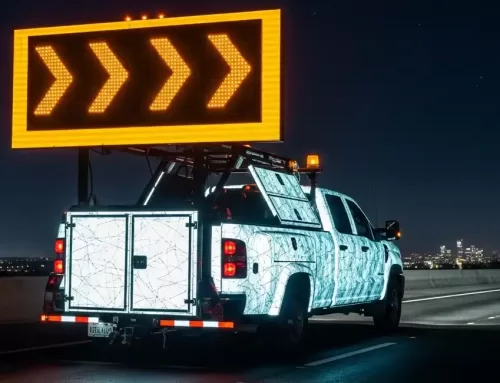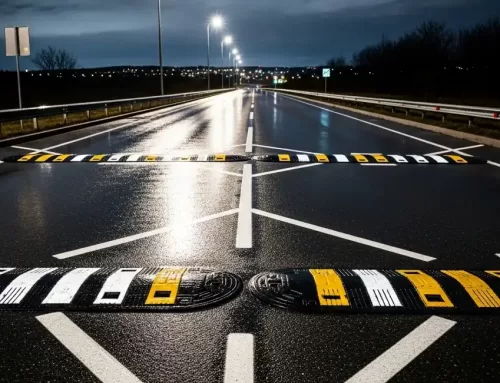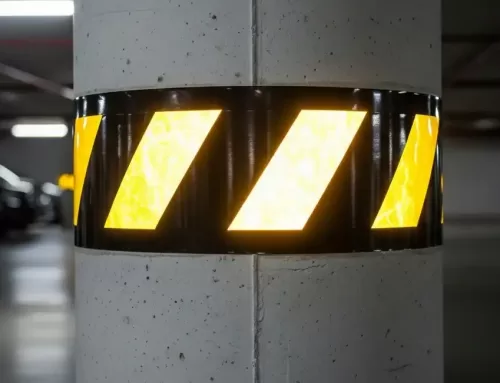Which companies need to use microprismatic reflective film?

The definition of the prismatic reflective sheeting:
Prismatic reflective film: a reflective material made based on the refraction and total reflection principle of cubic pyramids. The surface finish of each cubic pyramid exceeds 5nm (nanometers), the angle error is less than 0.01 arc seconds, and there are 10,000 microprisms distributed in every square centimeter. It is a reflective product that is completely realized by ultra-precision technical technology and processes.Compared with glass microbead reflective film, it has better reflective effect, longer visible distance and better recognition effect, and is generally used for road signs on high-grade highways.
Features of microprismatic reflective film
- Excellent product performance
- High reflectivity
- Reflective angle, distance, and direction are highly controllable
With the continuous increase in motor vehicle speeds and the increasing complexity of road conditions, the application market of microprismatic reflective film will become more and more extensive. In special climates such as foggy, rainy, snowy days, and at night, it can ensure that the signboard is clearly visible.
Background technology:
Prismatic reflective sheeting is mainly used for various road and railway guide signs, signboards, contour signs, raised road signs, traffic cones, crash cones, safety islands, mine airport safety signs, place name signs, license plates, property community safety signs, construction signs, billboards, stage scenery, trademarks, etc. Because reflective film plays an obvious warning role with its bright colors during the day, at night or in low light conditions, its bright reflective effect can effectively enhance people’s recognition ability, see the target clearly, and arouse vigilance, thereby avoiding accidents, reducing casualties, and reducing economic losses. It has become an indispensable safety guard for road traffic and has obvious social benefits.
Companies or factories interested in reflective prismatic sheeting products typically operate in sectors where high visibility and safety are crucial. Here are some potential industries and types of companies that might be interested in these products:

1.Traffic and Road Safety Manufacturers:
- Companies producing traffic signs, road markings, and other reflective safety products for highways and urban roads.
- Manufacturers of safety barriers and cones.
2. Automotive Industry:
- Manufacturers of vehicles that integrate reflective materials for safety, such as on bumpers and around doors.
- Producers of aftermarket automotive parts that include reflective materials for enhanced nighttime visibility.
3. Construction and Building:
- Companies involved in the construction of buildings that require high-visibility materials for safety and emergency exits.
- Manufacturers of industrial safety gear and construction site markers.
4. Personal Safety Equipment Producers:
- Companies specializing in high-visibility clothing and gear for workers in various industries, including construction, airport ground staff, and road maintenance.
- Manufacturers of personal protective equipment (PPE).
5. Maritime and Aerospace Industries:
- Shipbuilders and maritime safety equipment manufacturers who use reflective materials for life jackets and rescue tools.
- Aerospace manufacturers for use in marking emergency exits and pathways in aircraft.
6. Public Transport Systems:
- Public transport authorities and manufacturers who require reflective materials for buses, trains, and other transit vehicles to enhance visibility during low light conditions.
7. Signage and Advertising:
- Companies that produce commercial signage and banners, utilizing reflective materials for better night-time visibility.
8. Sporting Goods Manufacturers:
- Producers of sports equipment and clothing that incorporate reflective materials for safety during night-time or low-visibility conditions.
These companies value the safety and visibility enhancements that prismatic sheeting offers, making it a sought-after material in their production processes and safety protocols.





